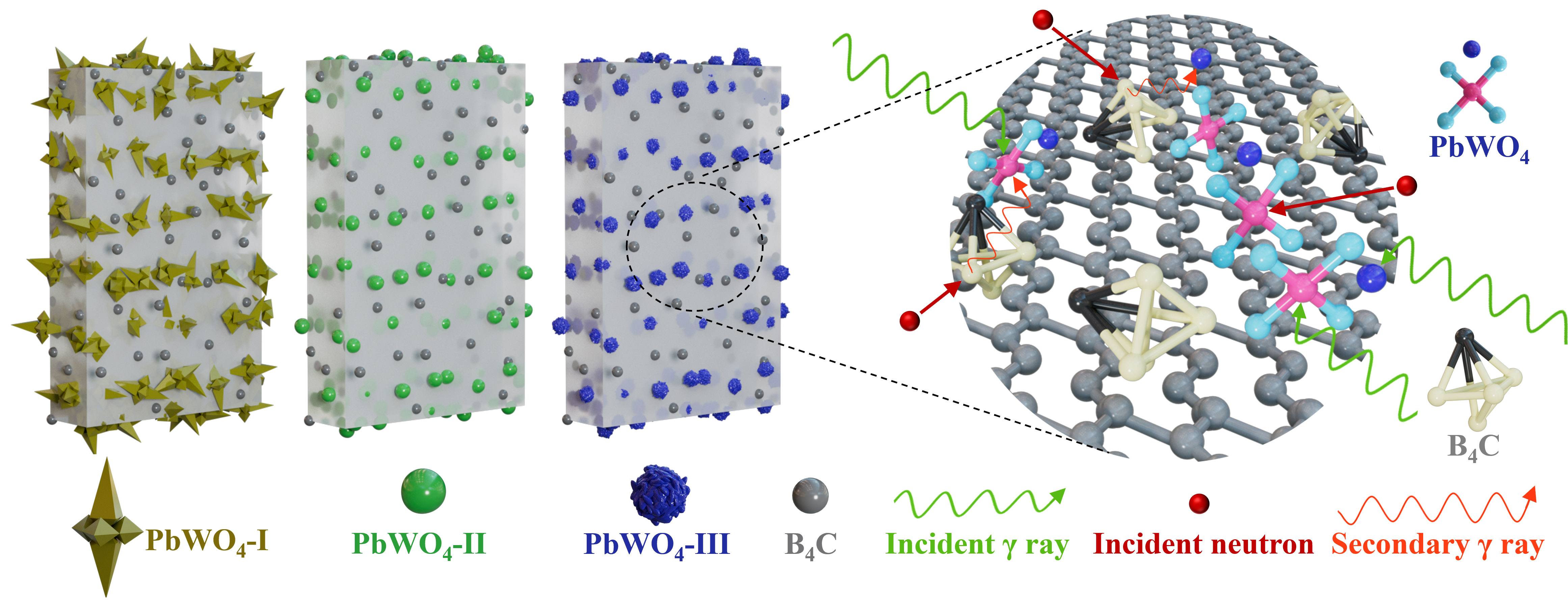
Recently, Dr. HUO Zhipeng and his student CHEN Zuoyang from Hefei Institutes of Physical Science of Chinese Academy of Sciences developed novel PbWO4 filler-reinforced B4C/HDPE composites with tunable microstructures.
By precisely regulate the microstructure of PbWO4 fillers, they achieved enhanced synergistic radiation shielding performance against both neutron and gamma radiation, while elucidating the correlation mechanisms between the microstructure and thermal, mechanical, radiation shielding properties, and service durability of the shielding composites.
The research results were published on Composites Part A: Applied Science and Manufacturing.
With the rapid development of nuclear energy applications, radiation therapy, and space exploration, the demand for radiation shielding materials has grown significantly. Neutron and gamma radiation are two common types of ionizing radiation that pose serious hazards to both humans and equipment. Traditional shielding materials typically only protect against a single type of radiation or suffer from insufficient mechanical strength and poor aging resistance. Thus, developing composite shielding materials that combine high-efficiency radiation shielding, excellent thermal and mechanical properties, and long-term service durability remains a key research challenge.
In this study, by synthesizing PbWO₄ fillers with varied microstructures through controlled reaction conditions, the team achieved distinct microscopic morphologies such as micron spindle-shaped PbWO4-I, micron spherical PbWO4-II and rough micron spherical PbWO4-III. Among them, the micron-scale rough spherical PbWO₄-III filler exhibited increased specific surface area, uniform particle distribution and better dispersion within the polymer matrix.
This microstructural refinement improved interfacial bonding, leading to enhanced thermal stability, mechanical properties, and UV aging resistance. Pb and W atoms in PbWO₄ fillers effectively absorb gamma photons and fast neutrons, while B atoms in B₄C fillers provides high thermal neutron absorption. The resulting composite thus offers enhanced synergistic shielding across a broad neutron energy spectrum and gamma ray.
The optimized PbWO₄-III/B₄C/HDPE composite achieved a 97.32% shielding rate against ²⁵²Cf neutrons and 76.43% against ¹³⁷Cs gamma photons at a thickness of 15 cm. These results represent a significant improvement over conventional materials, which typically lack this combination of synergistic shielding and robust mechanical performance.
This work not only demonstrates the importance of microstructure control in composite design but also provides a promising strategy for next-generation, high-performance radiation protection materials, according to the team.

Figure 1. SEM images of micron spindle-shaped PbWO4-I (a), micron spherical PbWO4-II (b), rough micron spherical PbWO4-III (c), commercial PbWO4 (d). (Image by HUO Zhipeng)

Figure 2. Schematic diagram of synergistic shielding mechanism of neutrons and gamma photons interacting with the PbWO4 filler-reinforced composites. (Image by HUO Zhipeng)